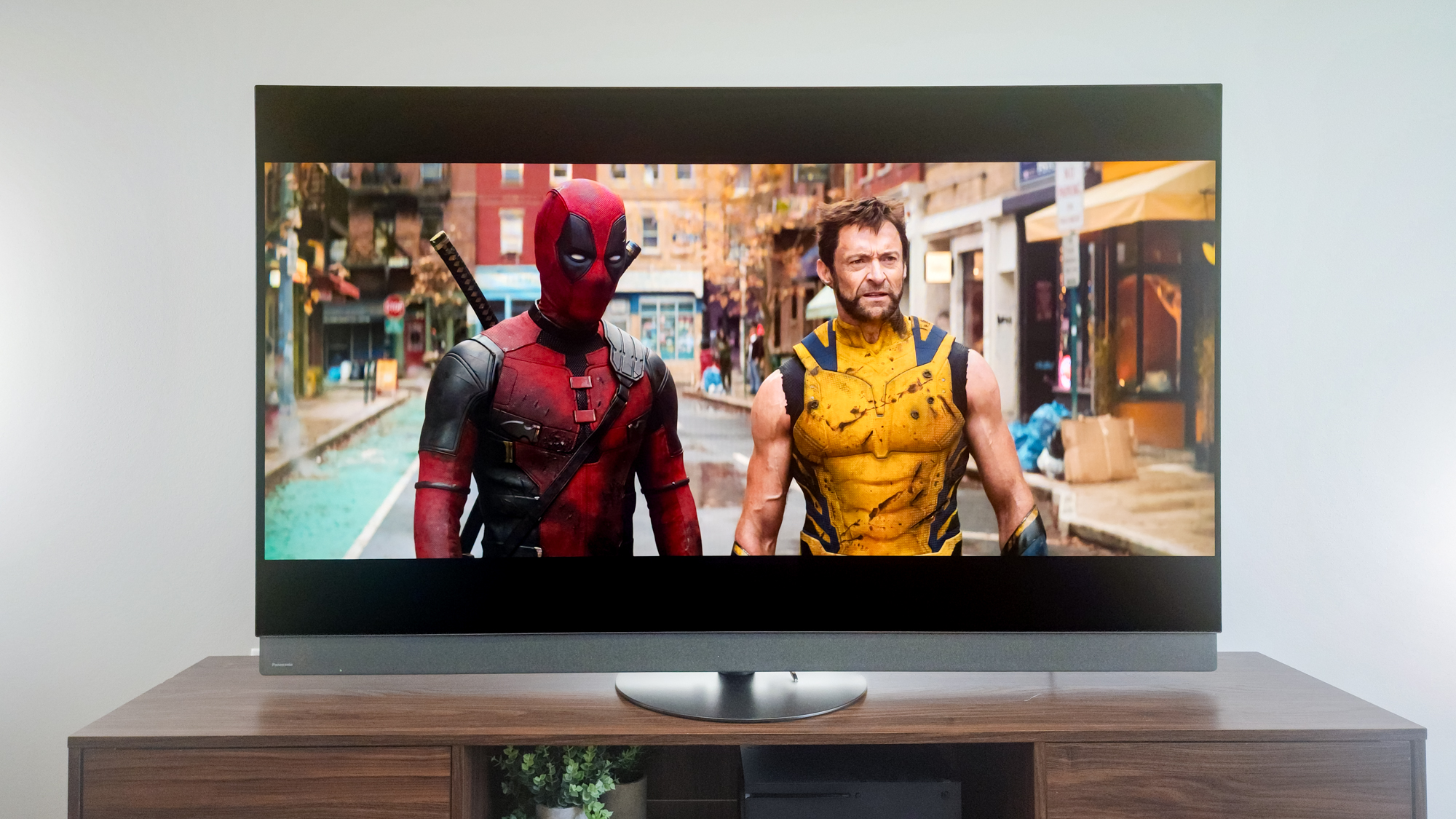Tom's Guide Verdict
The Idol 4S’s VR headset is unique for Windows phones, but not enough to make up for other flaws. Get an HP Elite x3 if you want a powerful Windows phone, or an inexpensive model if you want Continuum support.
Pros
- +
Colorful screen
- +
Terrific audio
- +
VR headset comes with phone
- +
Continuum support on a sub-$500 phone
Cons
- -
Camera takes overexposed photos
- -
Barely 6 hours of battery life
- -
Lack of apps for both phone and VR headset
- -
Dim display is hard to see in bright sunlight
Why you can trust Tom's Guide
We appreciated the Android version of Alcatel's Idol 4S, a good-looking phone with a sub-$400 price tag that also served as a gateway to virtual reality, thanks to an included VR headset. Alcatel has brought the phone to the Windows 10 Mobile platform, beefing up the processor and rear camera. But Alcatel also bumped up the price tag to $470 unlocked (though you can also get the phone through T-Mobile for $432).
In some respects, this new Idol 4S retains many of the features that impressed us about the Android version, such as a colorful display and excellent audio. But in other ways, the Idol 4S for Windows Phone is a big step back, particularly with poor battery life. Even the prospect of a Windows phone with its very own VR headset can't overcome those flaws.
Design: A lot like the Android version
Stack the Windows version of the Idol 4S next to its Android counterpart and you'd have a hard time telling the two devices apart. They're both the same size — 6.05 x 2.97 x 0.29 inches — though the Windows version of the phone is fractionally heavier at 5.36 ounces. (The original Idol 4S weighs 5.2 ounces.)
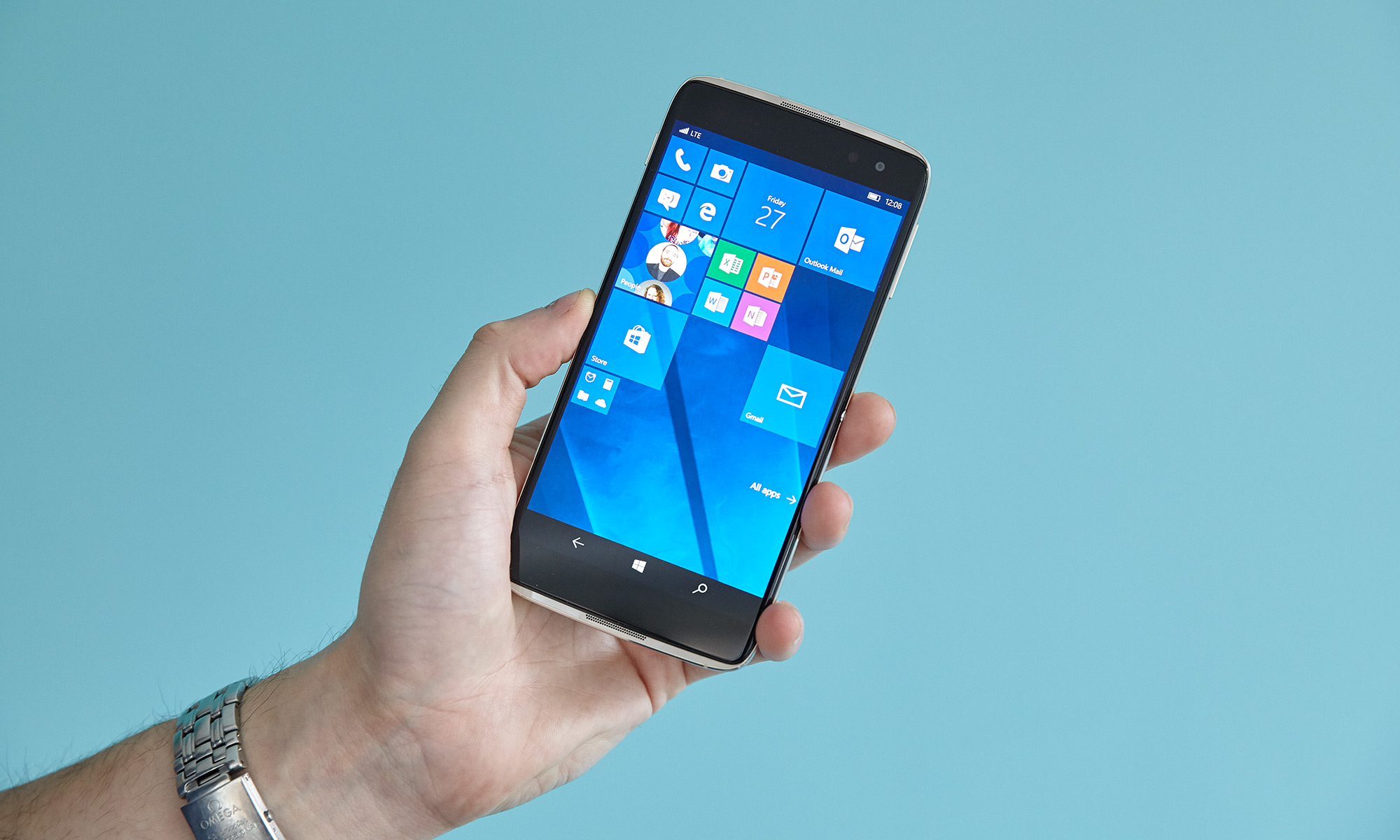
More important, Alcatel has retained the handsome glass panels on both the front and rear of Idol 4S, ringed by a metal band around the middle. There's a small but noticeable lip on the front of the phone where the glass panel ends abruptly, but it's a pretty stylish look overall.
I found myself frequently pressing an index finger onto the camera lens instead of the sensor.
Comparing the Idol 4S to other Windows phones, it's roughly the same weight as the 5.3-ounce Liquid Jade Primo from Acer. Alcatel's phone is also more compact than the HP Elite x3, a 6.84-ounce behemoth packed into a 6.36 x 3.29 x 0.31-inch frame.
Other design touches remain unchanged from the Android version of the Idol 4S, including the Boom key that sits beneath the volume rocker on the right side of the phone. On the Windows version, the button launches the Camera app and snaps photos. I noticed a couple seconds of lag when I fired up the Camera app. (The camera app took about a second to launch on the Android version of the Idol 4S.)
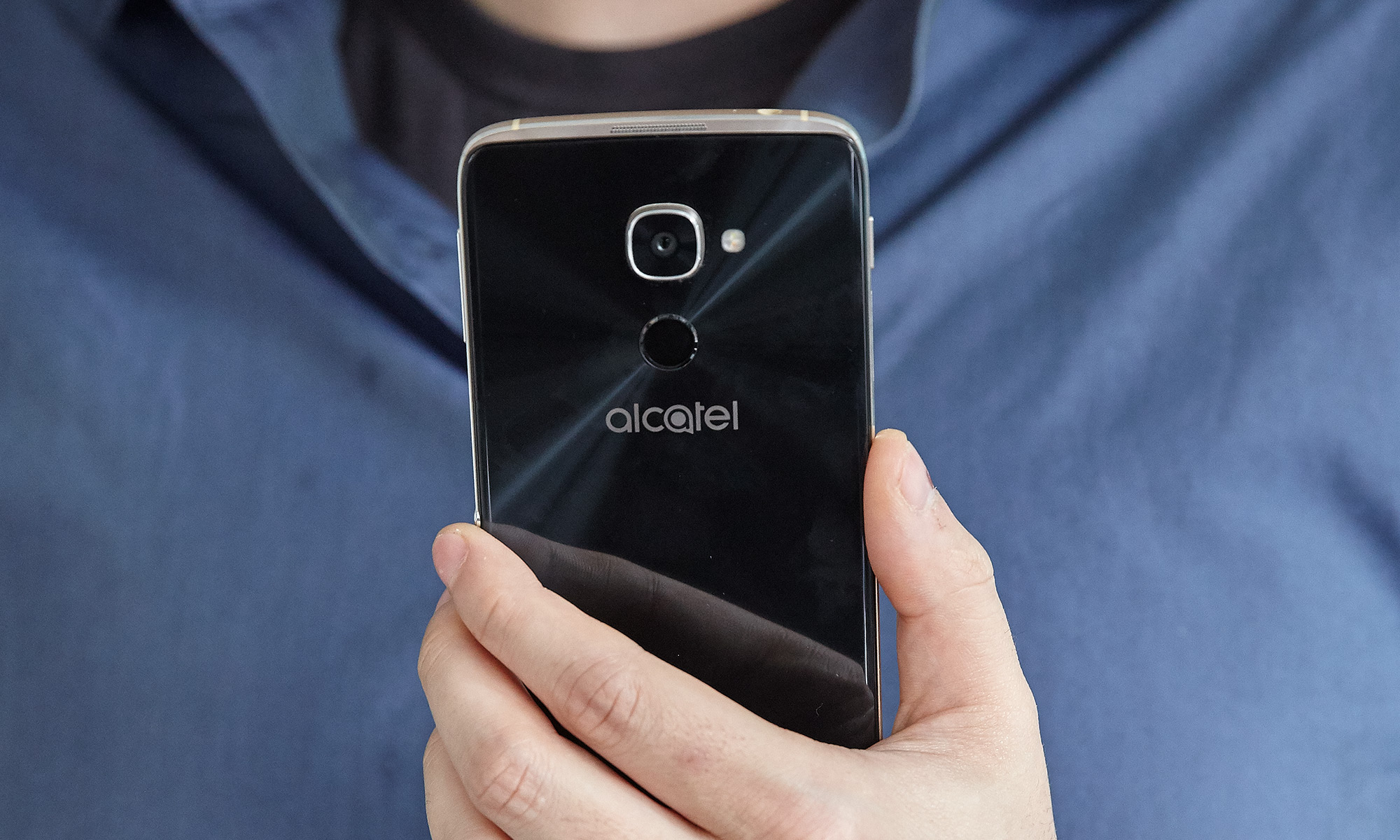
If I have a complaint about the Idol 4S's design, it's the fingerprint sensor. It's responsive enough at unlocking the phone using Windows Hello, but it's a little too close to the rear camera, which protrudes from the Idol 4S's back panel. I found myself frequently pressing an index finger onto the camera lens instead of the sensor.
Get instant access to breaking news, the hottest reviews, great deals and helpful tips.
Display and Audio: Colorful screen struggles in sunlight
Alcatel kept the 5.5-inch size of the Idol 4S's screen when it brought the phone to Windows, though it did downgrade the resolution to 1920 x 1080, a step down from the 2560 x 1440 resolution of the original phone. You feel the lower resolution's pinch when it comes to details. Watching Zootopia streaming on Netflix looked all right, but the individual details of the animal characters' furs never really popped.
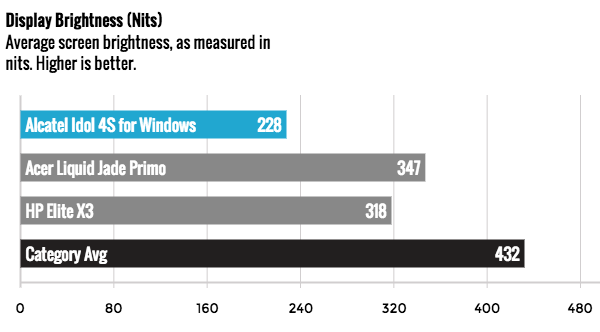
At least this panel offers vibrant colors. The screen registered 204.8 percent of the sRGB color gamut on our tests. That's much better than the Android version's 185.6 percent score. Indeed, Nick Wilde's orange fur and Judy Hopps' purple irises lit up the screen as I watched Zootopia.
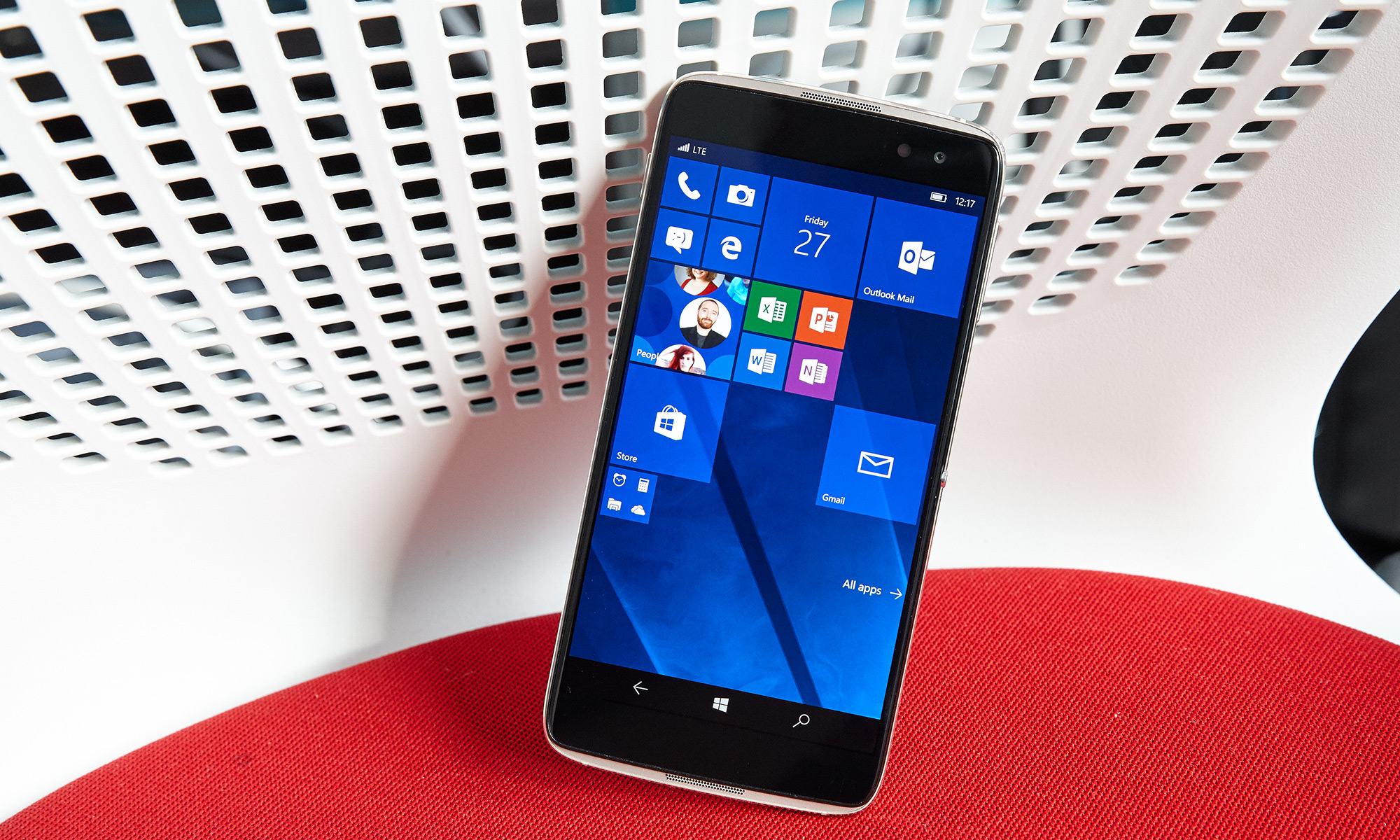
Like the original Idol 4S, the display on this Windows version is pretty dim. We measured it at 228 nits, well below the smartphone average of 431 nits, not to mention other Windows phones, such as the Liquid Jade Primo (347 nits) and the HP Elite x3 (318 nits). I didn't have too much of a problem seeing the screen indoors, but that changed when I walked outside. Even on a partly cloudy day, I had a hard time seeing the screen in direct sunlight.
The bundled headset is a decided step-down from the likes of such headsets such as Google's Daydream View or Samsung's Gear VR.
The Idol 4S offers superior audio, thanks to dual multi directional hi-fi speakers that provide crystal-clear sound even as you crank up the volume. The ominous opening strings from the Jaws score echoed around me as I watched that movie on Netflix. While the opening shark attack got a little distorted at high volume, by and large the Idol 4S handled almost any audio I could throw at it.
Virtual Reality: Headset included
It's no overstatement to say that Alcatel puts the VR capabilities of the Idol 4S front and center with this Windows Mobile device. The phone comes with a companion VR headset just like its Android counterpart; pop the Idol 4S into Alcatel's headset, and you can watch 360-degree videos, play a handful of games and get an up-close and personal look at your photos.
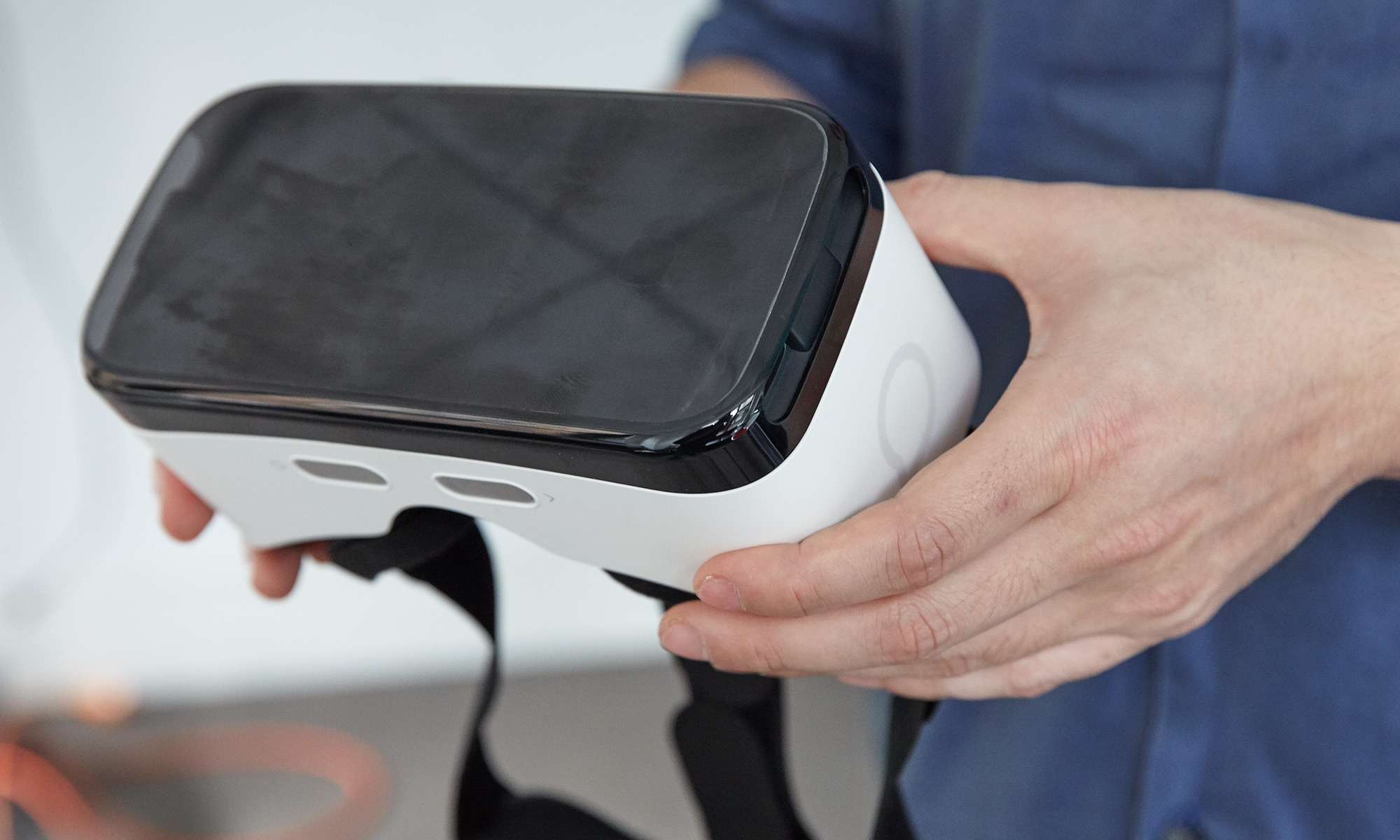
Alcatel's headset is comfortable enough, thanks to some foam lining, though it's a bit of a pain to set up the first time you dive into VR. Regarding functionality, the headset's a decided step-down from the likes of Google's Daydream View or Samsung's Gear VR, as a consequence of spartan controls — you get a back and select buttons on the bottom of the headset, and that's it. You tap the buttons, and they're not always as responsive as they should be.
The usefulness of the VR headset is further complicated by the stark reality of the Windows platform: there just aren't that many VR-friendly apps out there for Windows Mobile devices. There's no YouTube for Windows 10 Mobile, for example, which cuts you off from a lot of the VR content that's out there. The few VR apps available from the Windows Store seem mostly focused on emphasizing the potential of VR than creating something you'd return to again and again.
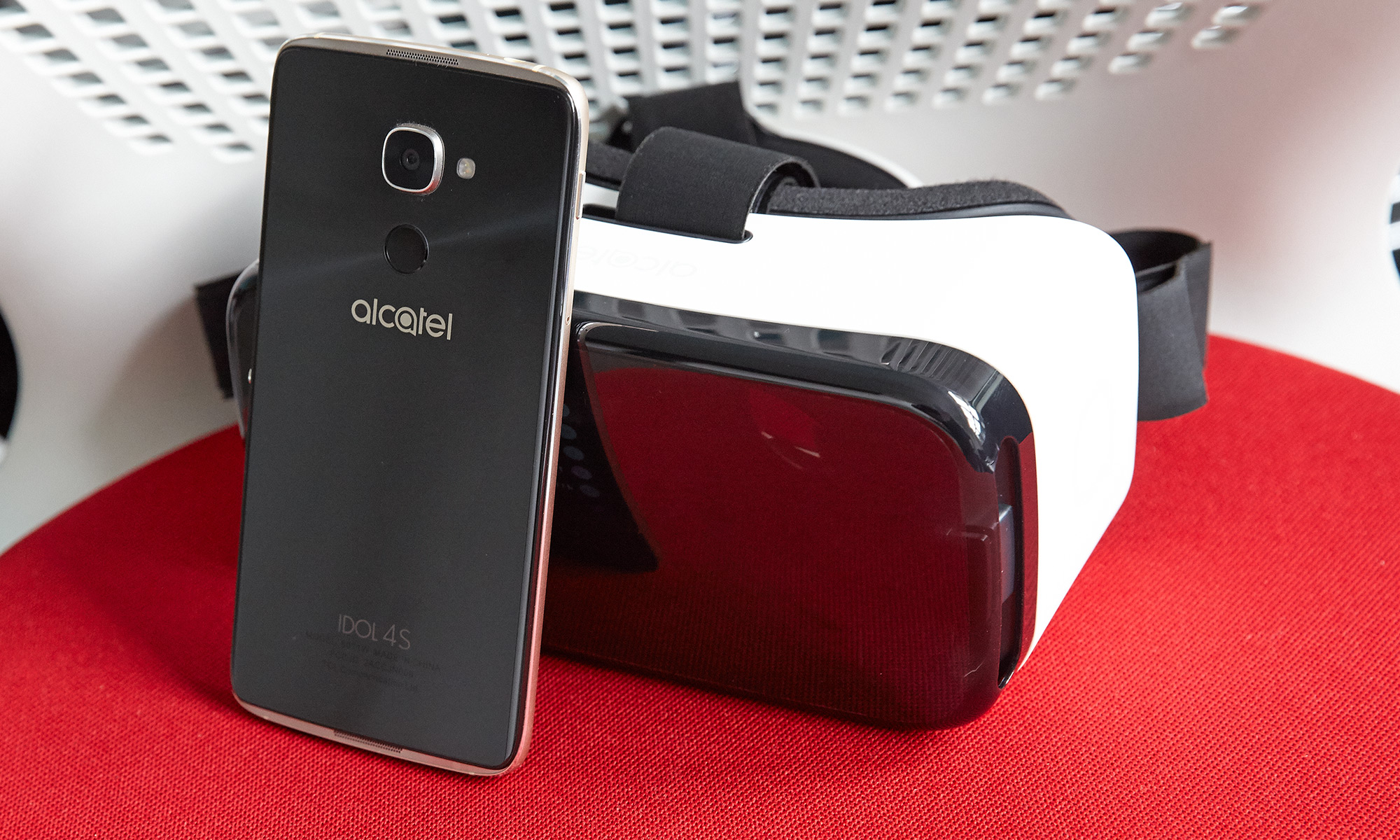
It was pleasantly creepy, walking down abandoned tunnels and blasting the undead in the included Zombie VR game, but after a while, the action felt pretty repetitive, and I was fairly relieved once the zombie horde finally overpowered me, ending the game.
MORE: Best VR Headsets
Alcatel might counter that a VR headset capable of running some VR apps puts the Idol 4S miles ahead of other Windows phones that have no VR component at all. And the company has a point, particularly if Microsoft's push to get hardware makers to build Windows 10-friendly VR headsets pushes more app makers to develop apps that could also run on Alcatel's headset.
It's hard to recommend the Idol 4S just on the merits of its VR experience, precisely because its VR apps are so early-stage.
Still, at this point it's hard to recommend the Idol 4S just on the merits of its VR experience, precisely because its VR apps are so early-stage. What's more, the experience lacks the immersiveness that VR requires. I found that when I wanted to exit a VR game or video, I had to take off the headset, pop out the Idol 4S and manually exit the app — the back button wouldn't take me back to Alcatel's VRLauncher app, which serves as a sort of home for the VR apps on your phone. Overall, it felt like a pretty clumsy experience.
Performance: Snapdragon 820 inside
The Android version of the Alcatel Idol 4S ran on a solid, if not top-of-the-line Snapdragon 652 processor with 3GB of RAM. Alcatel upped the ante on its Windows version, going with a faster Snapdragon 820 processor and 4GB of RAM.
Though it's hard to compare phones across different platforms, you do get a sense of the under-the-hood powers of the Idol 4S for Windows, as apps launch quickly and perform well. However, when I played Modern Combat 5 on the Idol 4s, I noticed occasional lag, usually just before I was about to launch into a firefight. That hasn't happened when I've played that game on Android phones with comparable CPUs, which I think may say something more about the quality of Windows 10 Mobile apps than about this particular phone.
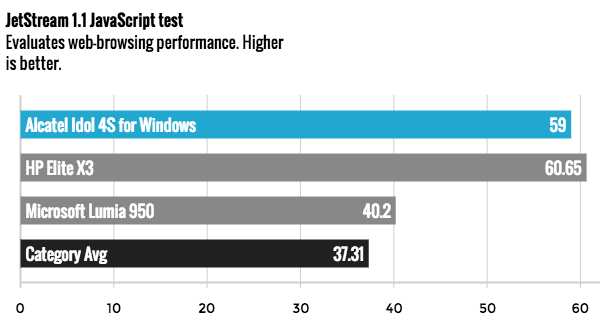
The Idol 4S performed well in the JetStream 1.1 JavaScript test, which evaluates web-browsing performance. Its score of 59.74 was a shade behind the 60.65 turned in by the HP Elite x3 (which also has a Snapdragon 820 and 4GB of RAM), but it clearly outperformed the Lumia 950's score of 40.20. The average smartphone turns in a score of 37.16 on this test.
Camera: Underexposure issues
As it did with the processor, Alcatel beefed up the camera for the Windows version of the Idol 4S, replacing the 16-megapixel rear camera on the Android version with a 21-MP shooter. The resulting camera takes some decent pictures, particularly when you've enable the HDR mode. But the camera tended to underexpose images slightly.

I should note that the first Idol 4S we tested had problems with the camera, particularly when it came to focusing on objects outdoors. Shots were often blurry and even the few that turned out OK, like a losing poker hand, only seemed to be able to produce sharp foreground images, even if the colors were accurate.

A second review unit provided by Alcatel produced much sharper photos, so we're chalking up our first subpar experience with the camera to a defective unit. (That said, even the camera on the second Idol 4S we tested seemed like it was constantly searching for a subject when we tried taking a photo, which is not ideal.)

Shooting indoors with the second Alcatel 4S review unit, the phone's camera accurately captured the vibrant reds of this rubber ducky, posing against a crimson background, though it's difficult to see where the duck ends and the wall begins. Still, it's hard to find fault with the Idol 4S's output here.

Problems cropped up when we started taking photos outside. The building in the New York city scape look pretty dark, so much so that the details from the facade of the building in the right foreground of the image get lost in a shadow.

That same exposure issue pops up in a shot of some avocados on a windowsill. The greens of the avocados blur into blackness, and it's hard to spot distinct the individual shape of each fruit. At best, the rear camera of the Idol 4S takes acceptable shots, but it's no standout feature.
Up front, the 8MP selfie cam handles color as well as the rear camera without the focus problems I ran into. A self-portrait shot in broad daylight accurately picked up my complexion, and my hair stands out against the gray wall behind me. You can even make out a patch of blue sky. The results are less sharp when you move indoors into dimmer lighting, but even a selfie taken in my basement office turned out OK, if a bit muted.

Battery
If the camera is underwhelming on the Idol 4S, the battery is downright disappointing. Alcatel went with a 3000 mAh battery, which theoretically should provide enough juice to get you through a day.
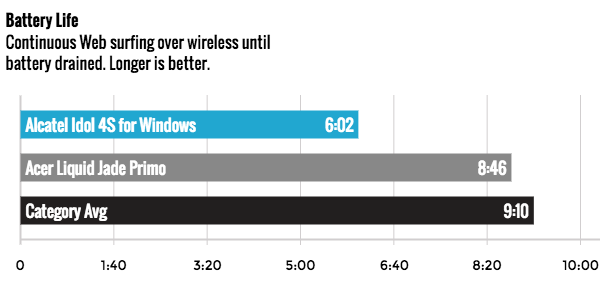
That's not what happened in practice, though. In our battery test, involving continuous web surfing over T-Mobile's LTE network, the Idol 4S gave up the ghost after 6 hours, 2 minutes. That's far below the average smartphone's time of 9:20, and the Liquid Jade Primo's 8:46 time. The Elite x3 has a screen-time feature that prevented us from running our battery test, but we noticed anecdotally that the phone seemed to last a while on a charge.
If the camera is underwhelming on the Idol 4S, the battery is downright disappointing.
Alcatel says the Idol 4S supports Quick Charge. I plugged the Idol 4s into the included wall charger when its battery meter showed 33 percent power. After 20 minutes of charging, the battery meter had climbed to 58 percent.
Software
As a Windows 10 phone, the Idol 4S faces the same challenges as other Windows mobile devices: there simply aren't enough apps when compared with the Android and iOS platforms. And that doesn't figure to change, with even Microsoft stopping updates for Minecraft Pocket Edition on Windows 10 Mobile. Unless you have a very good reason for being on the Windows 10 Mobile platform — say, you want the integration with your works life — it's really hard to recommend this OS over Android or iOS.
That said, at least the Idol 4S features a good implementation of Windows 10 Mobile, with the platform's distinctive tile interface on the home screen. You'll find a lot of apps on the phone, though since many of them are in service of the included VR headset, you're unlikely to mind too much.
MORE: Best Cheap and Unlocked Smartphones
The Idol 4S also supports a pair of Windows 10 features, most significantly Continuum. Plug the phone into a dock that connects to a monitor, and you'll essentially be able to use your Idol 4S as a mobile PC. (You can only use apps built into the Universal Windows Platform, and you can't view multiple apps at the same time.) Alcatel doesn't include any accessories in support of Continuum with the Idol 4S, so you'll have to buy those separately. Still, it's nice to have that feature available on a phone that costs several hundred dollars less than the HP Elite X3 (although the Continuum-supporting Lumia 950 is even cheaper than the Idol 4S).
The Idol 4S also includes Cortana, Microsoft's voice-powered digital assistant. Cortana's not my favorite digital assistant, but it can be useful for setting reminders and opening apps. Cortana's a little too eager to respond to questions with web-search results for my taste: asking Cortana who the U.S. president is produces a list of headlines, while iOS's Siri can give you an up-to-date answer.
Bottom Line
You interest in the Idol 4S will hinge largely on how much Continuum and virtual reality appeal to you. And while the Idol 4S can run Continuum for less than what it would cost you to get an HP Elite x3, you could save even more money, while trading off on performance, with a Lumia 950 or Liquid Jade Primo. And those phones don't have the battery issue we ran into with the Idol 4S.
Even the Idol's distinguishing feature — its included VR headset — isn't polished enough to overshadow the phone's shortcomings. And the lack of VR apps for Windows 10 Mobile makes the headset feel more like a gimmick than a valuable add-on. The Idol 4S had a lot going for it as an Android phone; it's a shame all those features didn't translate well to Windows.
Photo credit: Jeremy Lips/Tom's Guide
Philip Michaels is a Managing Editor at Tom's Guide. He's been covering personal technology since 1999 and was in the building when Steve Jobs showed off the iPhone for the first time. He's been evaluating smartphones since that first iPhone debuted in 2007, and he's been following phone carriers and smartphone plans since 2015. He has strong opinions about Apple, the Oakland Athletics, old movies and proper butchery techniques. Follow him at @PhilipMichaels.

